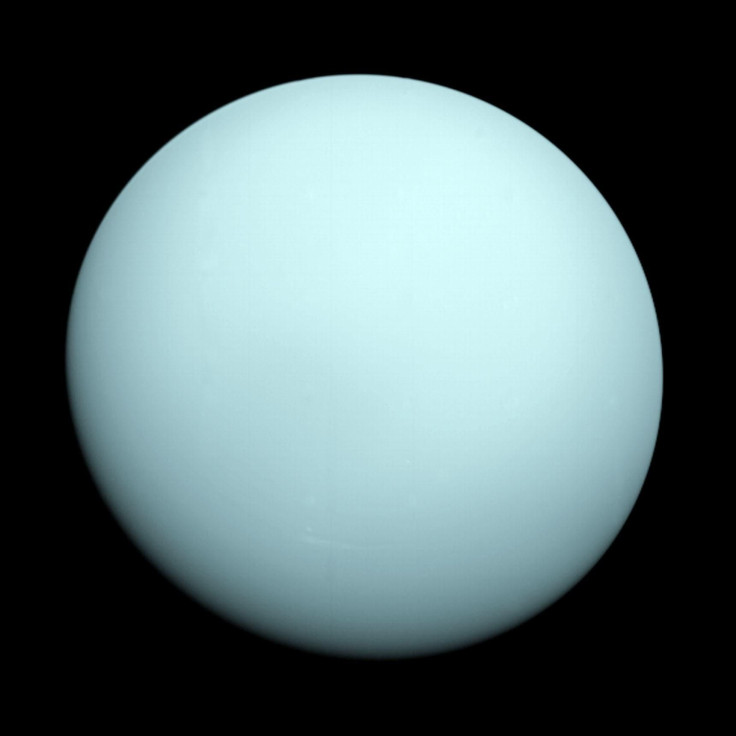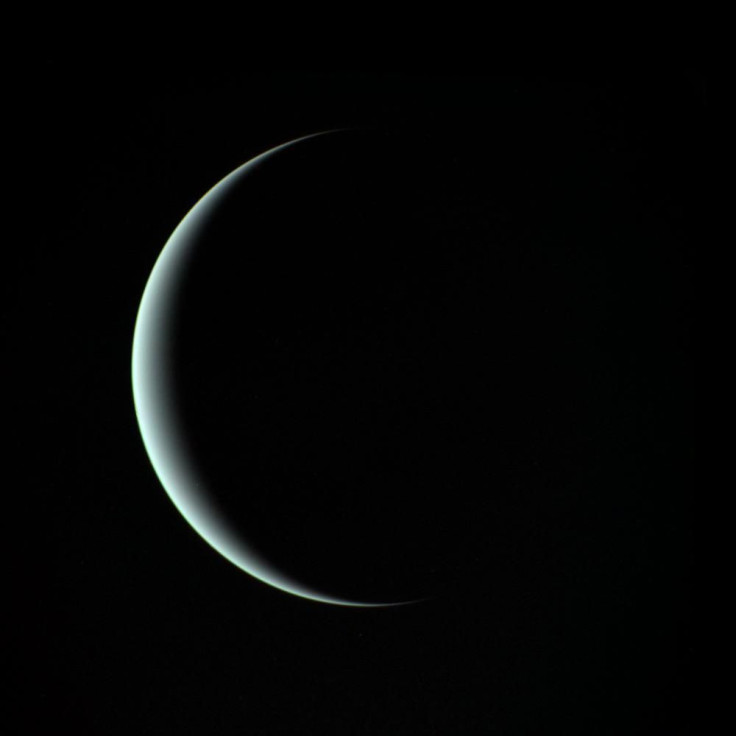What Color Is Uranus? Icy Planet’s Brightness Changes With Solar Cycle

Uranus changes in color and brightness to the same rhythm as the solar cycle, showing how far the sun’s influence extends into space even if there isn’t much heat reaching the outer planets.
Scientists studying the fluctuations in Uranus’ appearance found that it runs on an 11-year cycle, aligning with solar activity like sunspots. According to a study in the journal Geophysical Research Letters, its both the sun’s light and its magnetic forces, which fluctuate through that cycle, that determines how clouds form on Uranus and what color its atmosphere glows.
The research was based on telescope observations made of Uranus going back to 1972 and followed a similar investigation for Neptune, which also found that the sun’s 11-year cycle influenced color and brightness.
“How bright a planet appears to us is an indicator of the cloud cover in its atmosphere,” according to the study.
The researchers say that two factors are at play there: the sun’s magnetic field and the light emanating from it. The ultraviolet light influences the colors of the particles in Uranus’ atmosphere while its magnetic field influences cosmic radiation that bombards the solar system, pushing it away from the icy world. When the sun’s magnetic field fluctuates through its 11-year cycle, so does the protection it provides from the energetic particles in the cosmic rays, affecting how clouds form on Uranus.
The University of Oxford explained that the scientists saw this rhythm in action after accounting for the seasons and the planet’s movement around the sun, an orbit that takes 84 years because Uranus is so far out.
“The atmosphere of Uranus is, like Neptune’s, effectively a giant ‘cloud chamber,’ able to respond to the incoming energetic particles,” University of Reading researcher Giles Harrison said in the Oxford statement. “It is amazing that the effects are visible even from Earth, more than a billion miles away.”
Measurements of cosmic rays taken with the Voyager 2 spacecraft as it made its way through the outer solar system added to the data the scientists called upon in their research.
“This is the first evidence of two planetary atmospheres — Neptune originally and now Uranus — showing similar variations, in both cases originating from their host star,” the study notes.

© Copyright IBTimes 2024. All rights reserved.











